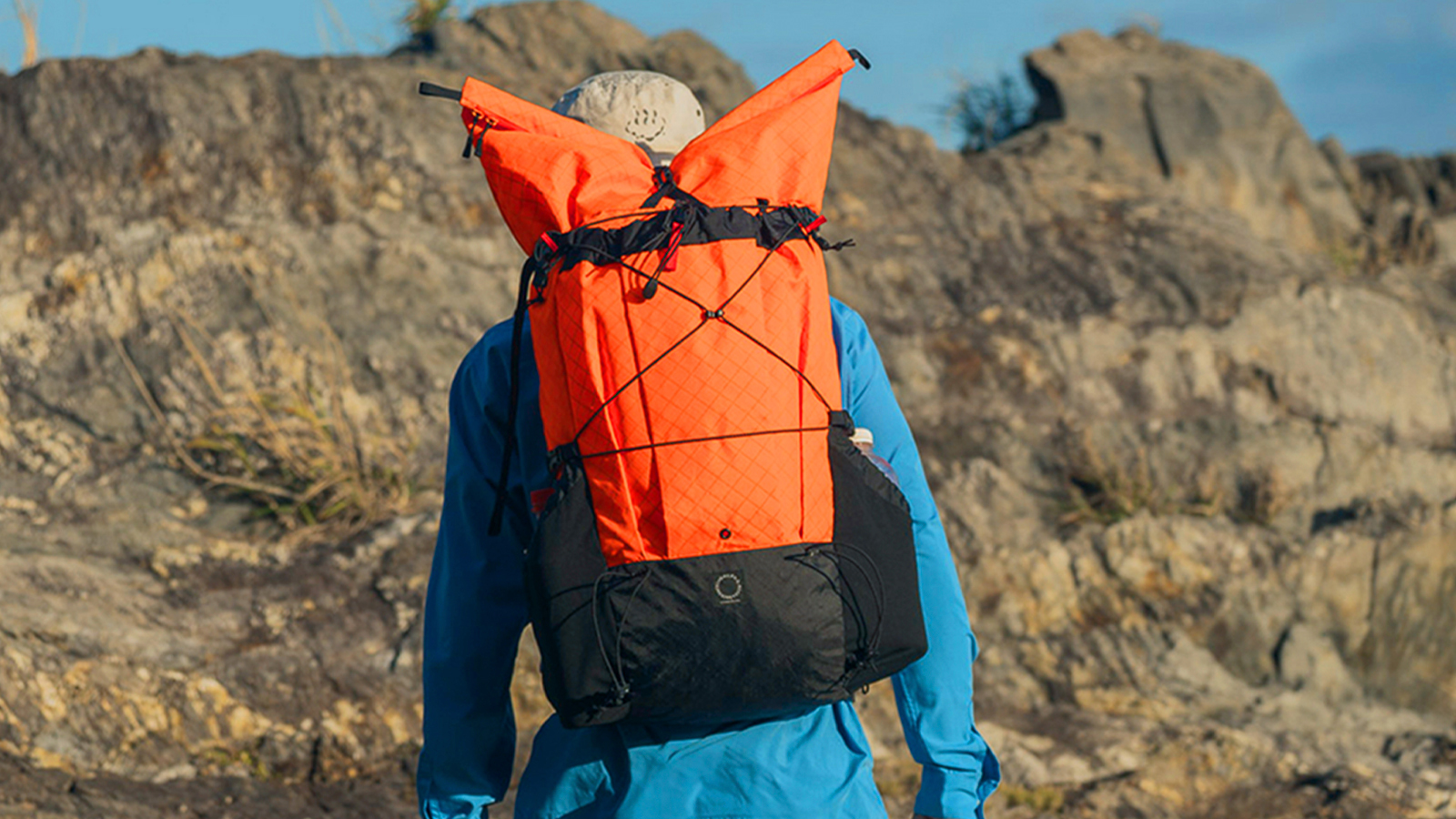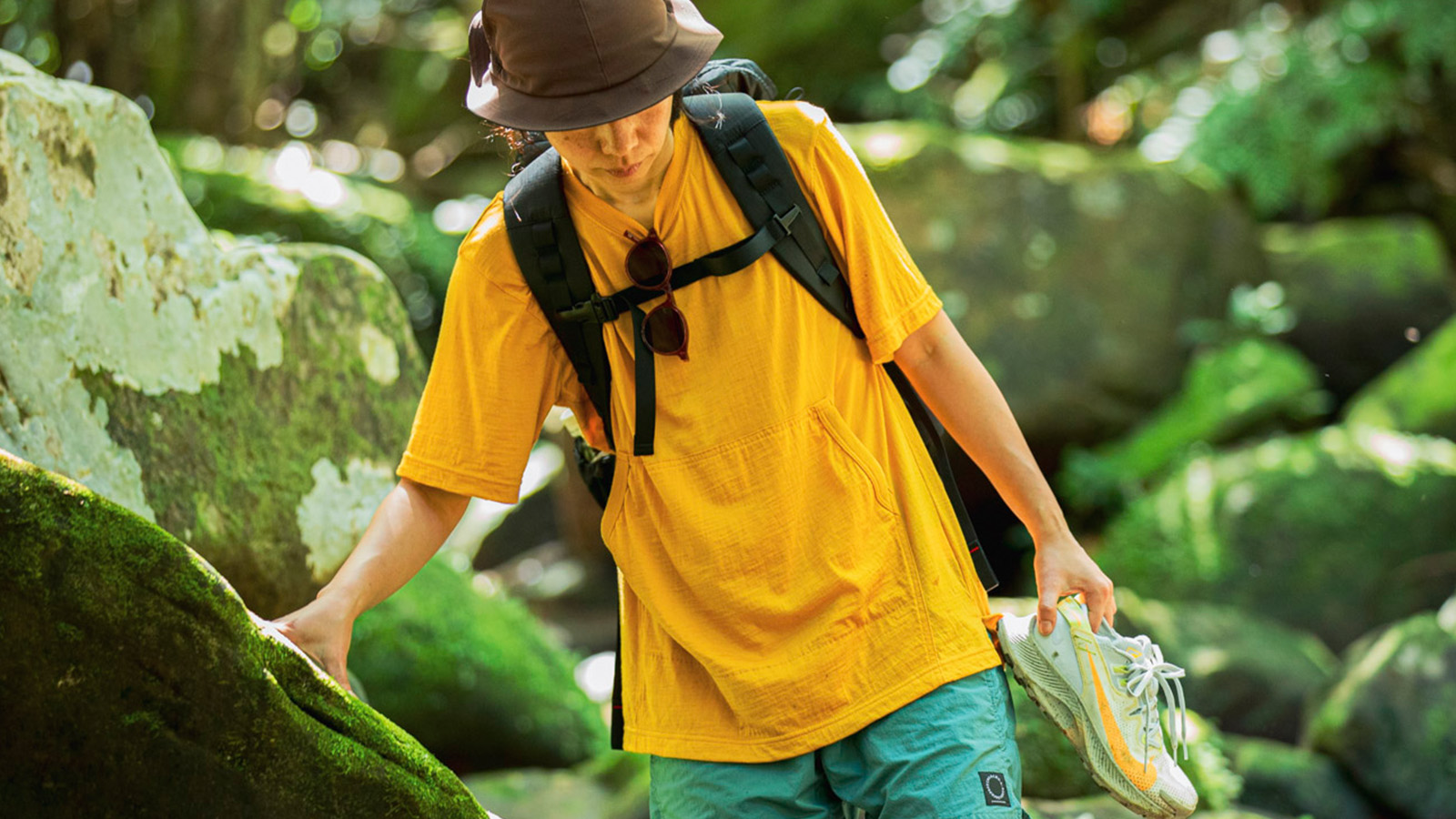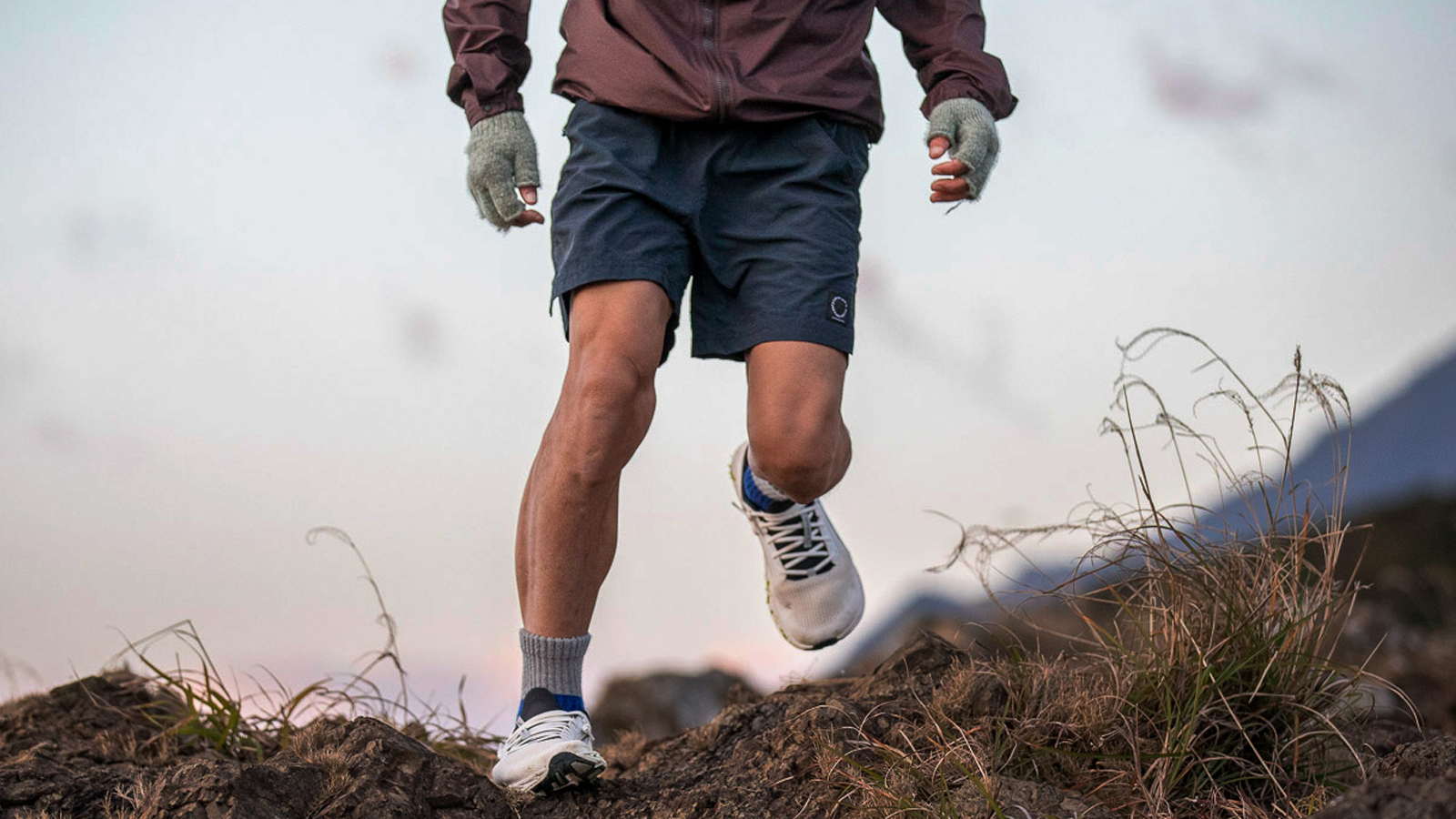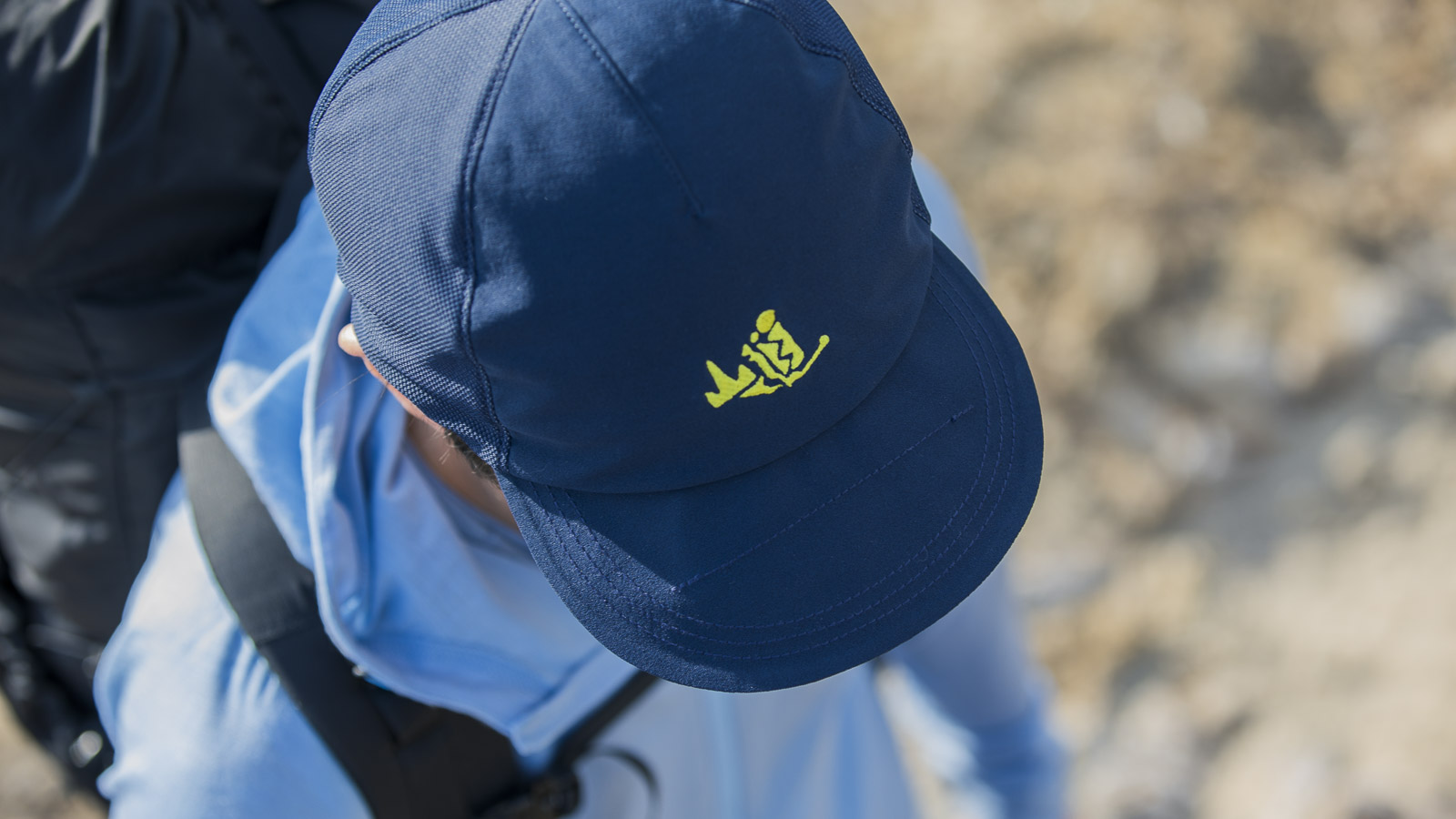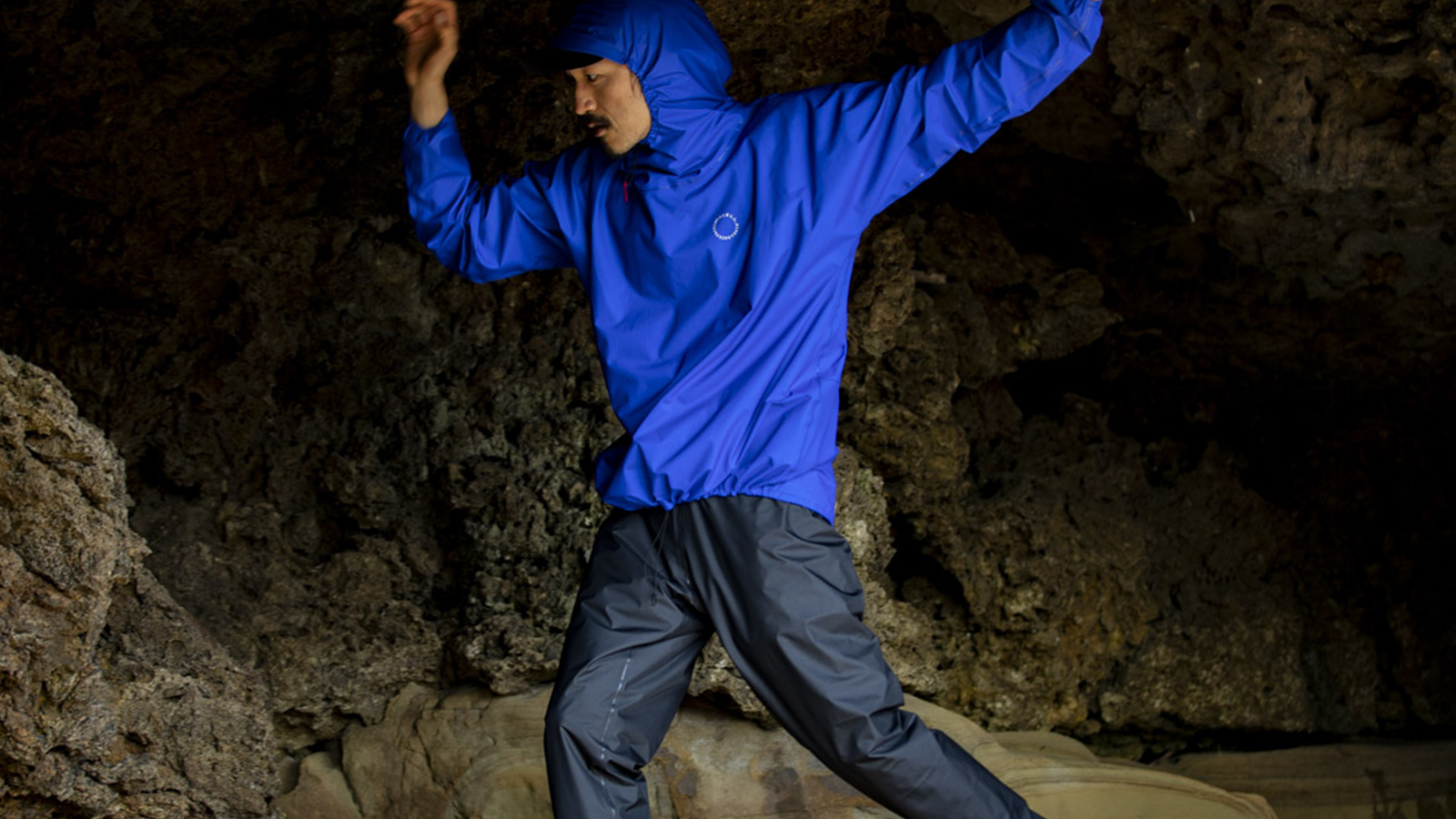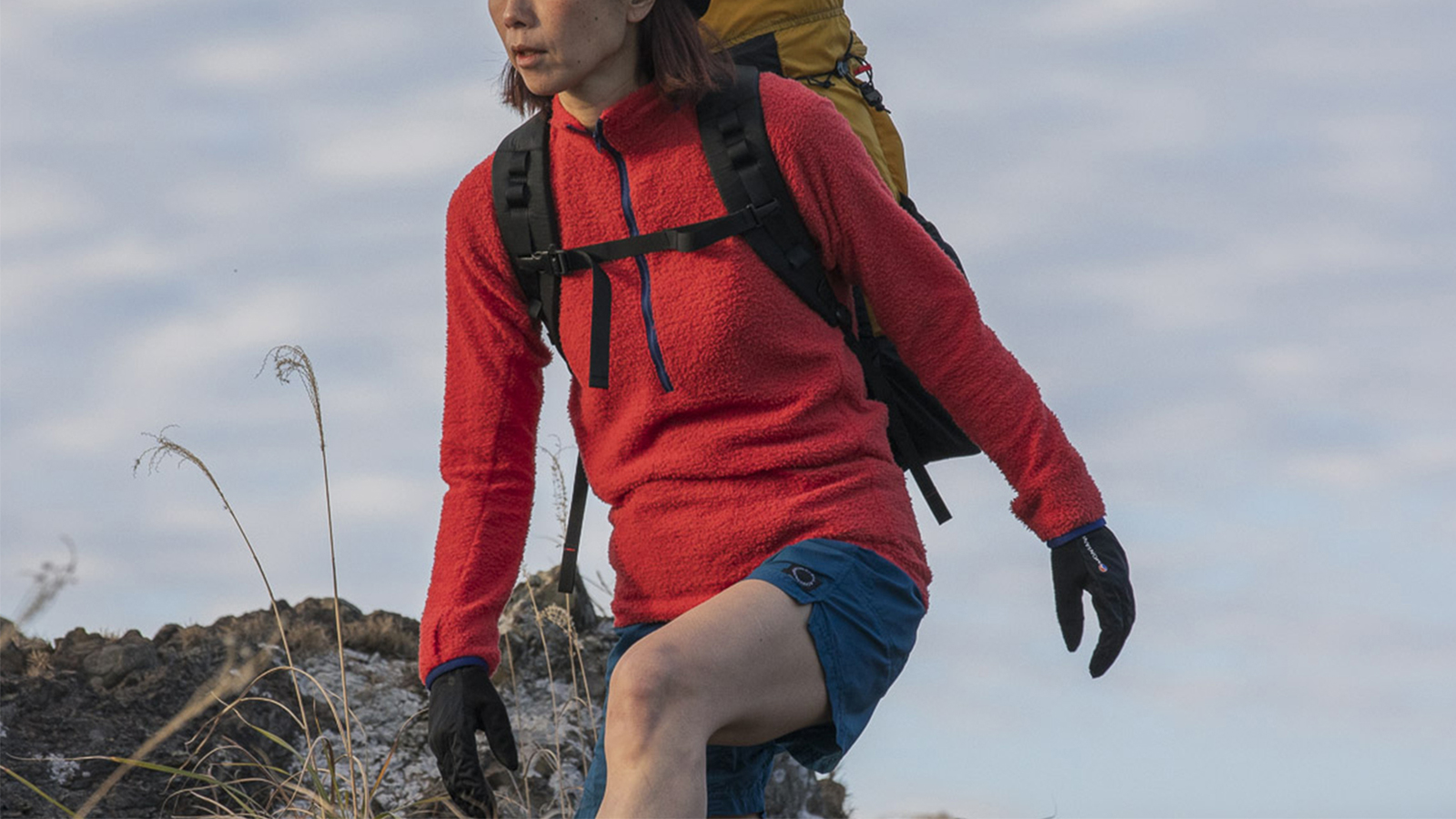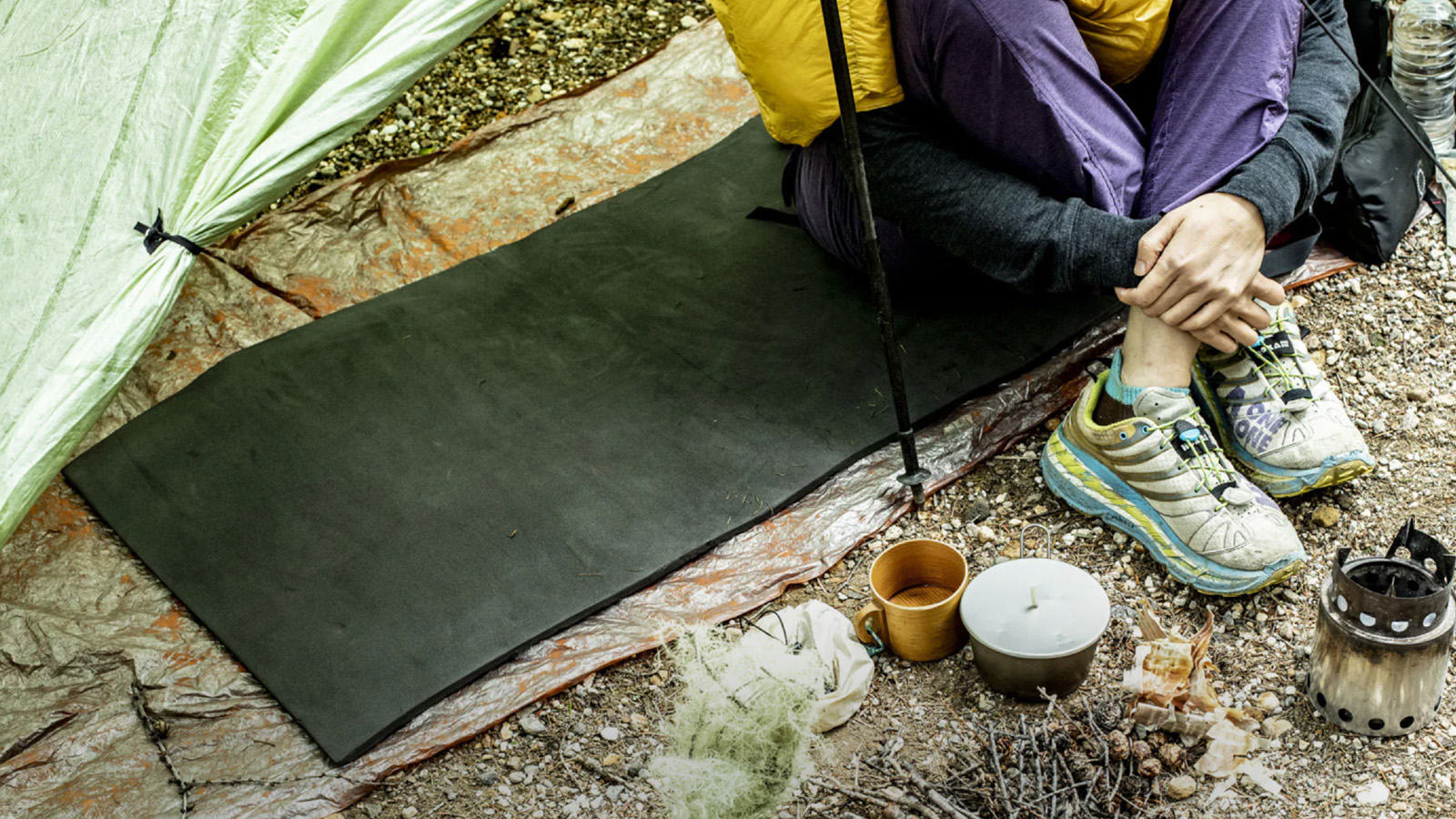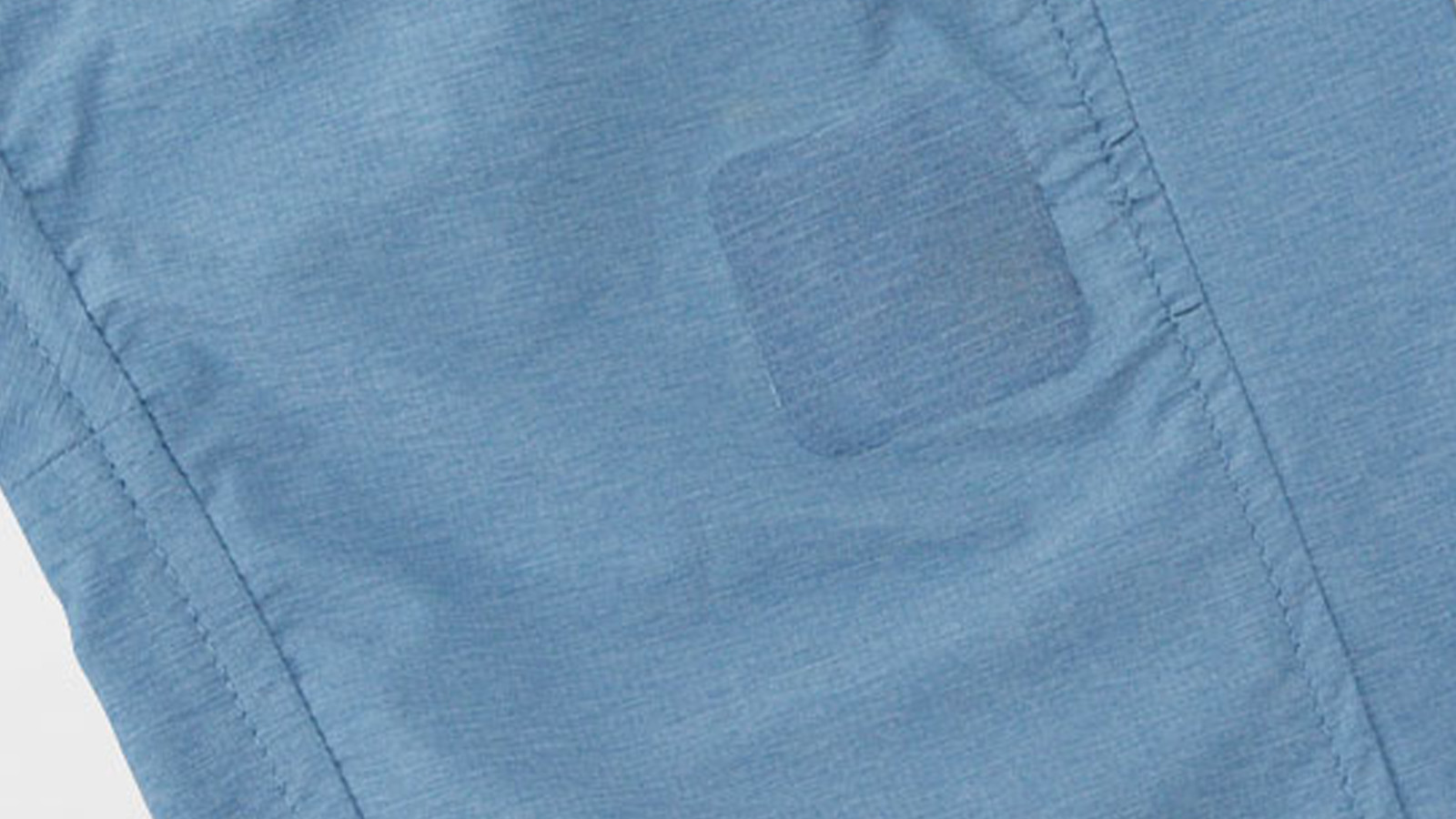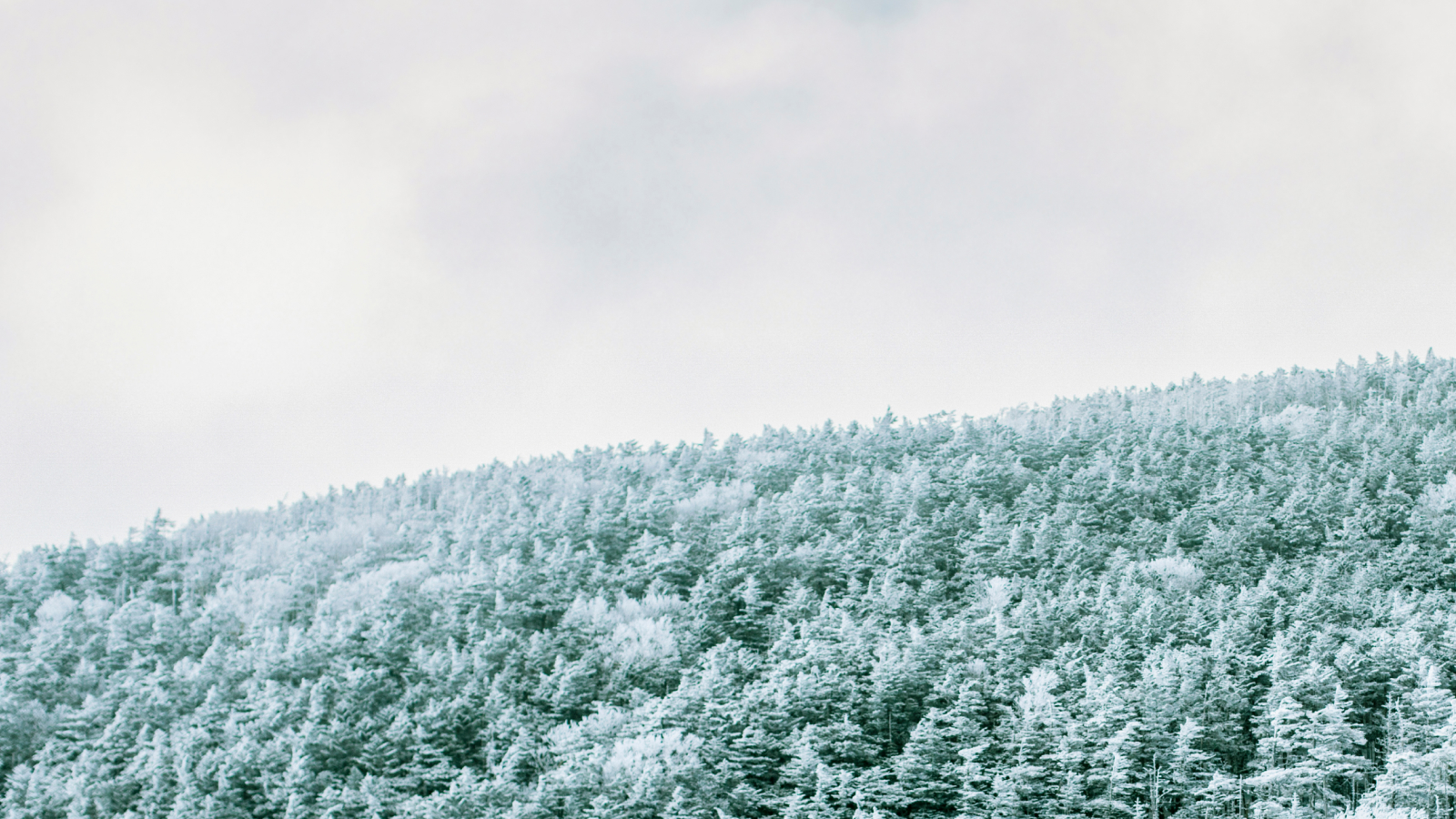Yamatomichi in 2011
Yamatomichi in 2011
What follows is an interview conducted by Masaaki Mita in 2011. This was the first interview ever with Yamatomichi, just one year into its founding, run solely by the husband-and-wife team of Akira and Yumiko Natsume.
Much has changed since then—the social climate, the outdoor scene, etc.. Yamatomichi has moved far beyond the future envisioned, yet it’s remarkable to see that the ideals and principles expressed here in this interview remain completely unchanged.
We hope this article provides insights not only for those who like to make gear, but also for anyone contemplating going independent or starting something new.
Before Yamatomichi, you worked at Gas Book, exploring art and design. Starting a gear company is a bold leap—what sparked that decision?
Akira: There are a lot of reasons, but the main reason was because I liked mountains. I was working a demanding job, which restricted my freedom and limited my ability to hike. I craved a lifestyle that brought me closer to nature. Through my work at Gas Book, I had been exposed to art and design from all over the world. Yet, as my interest in hiking grew, I became increasingly captivated by the simplicity and clarity of outdoor gear. I found hiking gear to be both beautiful and refreshingly straightforward.
Masaaki: Absolutely. Good gear has a way of speaking for themselves, don’t they?
Akira: Exactly. The designs I saw in daily life began to feel ordinary, even superficial. It became difficult to pinpoint what made one thing truly stand out from another. But this wasn’t the case with hiking gear. It was an art form that was more clear and I found that incredibly appealing.
Masaaki: You’ve worked with all sorts of art when working at Gas Book. Are there moments in nature that feel like art?
Akira: Sure. I love music, but in the mountains, there’s an absence of sound. Yet, there are these moments like—standing on a ridge in a gray, misty world where you can’t see a thing—then suddenly, the wind sweeps through, and the sky opens up to this incredible blue and breathtaking scenery. I can literally hear jazz in moments like this. It’s as if I’ve stepped into a scene from a Hayao Miyazaki film. I completely fell in love with everything about it.
Masaaki: When was this?
Akira: It was around the time Spectator (a magazine company in Japan) published their hiking-themed issue, maybe five or six years ago?
Masaaki: That issue came out in 2006. That was also around the same time I got into hiking. *I worked on that issue, and everyone around the editorial office started hiking; we’d all be showing off our latest gear to each other whenever we met (laughs). Was there a specific event that got you interested in hiking?
*Masaaki was a writer for Spectator before becoming our editor and chief of Yamatomichi Journal.
Akira: I go diving in Okinawa pretty oftern and one time, on Ishigaki Island, I joined a kayak tour and camped on an uninhabited beach. It was incredible, and I thought, “I want to try this in the mountains next.”
Yumiko: I remember being very excited about sleeping in a tent. It brought a sense of adventure.
Akira: After that kayaking trip, I went to Mt. Oze, and was completely blown away. I was genuinely surprised by how beautiful Japan is.
Masaaki: I’ve grown to love Japan through hiking. Before, I would go abroad and passionately explain how strange or quirky Japan is. It was as if I was a little ashamed of my own country. But since I started hiking, I’ve come to appreciate Japan, and recently, I find myself speaking highly of Japan.
Akira: (snaps fingers) Exactly, that’s the second thing! Experiencing Japan’s natural beauty made me rediscover the charm of Japan. But back then, if you wanted to present Japan’s appeal to the world, it was mostly anime, games, or bits of pop culture.

In 2011, all operations were handled from their apartment in Kamakura.
Masaaki: Before, I had this strange assumption that I had to go abroad to see grand scenery, but I’ve come to see that was just a misconception. Every country has their own unique splendor, but Japan’s mountains possess a distinct, unique beauty found nowhere else.
Akira: Although It’s not a matter of which is superior—but I believe Japan is worth boasting about.
Masaaki: While I don’t strongly connect with the concept of patriotism, I’ve come to feel a deep sense of local pride. There are still aspects of Japan’s government and social systems that feel strange to me, but we definitely have some good views.
Akira: Absolutely. That’s exactly why I started Yamatomichi—to share the beauty of our natural landscapes. When you look at pre-war literature, like Shigeharu Tabe’s Yama-to-Keikoku, you discover the many ways Japanese people used to connect with hiking. Back then, it wasn’t just about conquering peaks. The experience was more holistic, embracing everything from valleys and forests to rivers and mountaintops. It was about appreciating nature in its entirety, not just the summits. I believe there are countless ways to enjoy being in nature.
Masaaki: I get it. The media rarely highlights those other aspects of hiking and tends to boast peak-hunting.
Akira: For instance, I often see people with massive backpacks, struggling under their weight. Some are even brought to tears by the sheer difficulty of the hike. It always makes me wonder—what drives them to hike in the first place? It seems like many don’t put enough thought into making the act of walking itself more comfortable.
Yumiko: I think it’s fine if people have different views and styles with hiking. (laughs)
Akira: People often worry about ultralight gear breaking. But to me, that’s not really a problem. There’s something meaningful about taking the risk of using something a little more delicate. While the durability might be a downside, the trade-off is the incredible benefit of lightness and comfort, which ultimately gives the hiker greater freedom. As a manufacturer, it might seem odd to say it’s okay for gear to break, but I genuinely believe there’s value in that. When gear fails, the lessons you learn are invaluable. It’s an opportunity to test your limits and gain a deeper understanding of yourself. This kind of exploration is essential, and while it can be difficult to find in everyday life, hiking creates the perfect space for it. What do you think?
Yumiko: I think I’ve lost track of the conversation (laughs).
Akira: Oh, really? Sorry (laughs).
Masaaki: (laughs). In everyday life, we’re constantly making decisions—whether it’s about buying a house, a car, or choosing a school or job. But when it comes to hiking, the feedback is much more immediate. In just a few days, or even within a week, you quickly discover whether the choices you made were the right ones.
Akira: Exactly! That’s it!
Let’s go back a bit—What drew you and Yumiko to ultralight hiking?
Akira: Hiking is so much better when you travel light. I learned that the hard way on a 5-day trip to Kumono-daira in the Japan Northern Alps, lugging heavy, traditional gear. Meanwhile, older hikers with minimal packs—staying in huts—zipped past me (laughs). My pack was so heavy I couldn’t even enjoy the views. All I could think was, “Hiking shouldn’t be this uncomfortable.” I knew about ultralight hiking back then, but it seemed like a joyless, overly ascetic approach—not something I thought I’d enjoy.
Masaaki: True, from the outside, ultralight can seem a bit masochistic (laughs).
Akira: At that point, I was determined to lighten my pack. I bought a tarp, an alcohol stove, and used a Black Diamond RPM daypack, keeping my base weight around 4 kilograms. Then I headed to Yatsugatake. Unsurprisingly, it was a game-changer—light, freeing, and completely immersive. I could fully enjoy the breathtaking scenery, and if I felt like it, I could even run. Setting up the tarp was another revelation. It offered an open view of the surroundings, letting me feel more connected to nature. I’d sleep as the sun set, wake up before dawn, pack up quickly, and hit the trail—all while staying perfectly in rhythm with the natural world. It was everything I had been missing.
Masaaki: It’s like being “continuously outdoors.”
Akira: Exactly. There was no sense of alienation from the weight, and the connection, the dialogue with nature, remained unbroken. Everything was simple, and it was just so enjoyable. After that, I couldn’t go back to heavy gear. I even felt a bit embarrassed, wondering, “Why did I ever carry so much stuff?” (laughs).
Masaaki: It’s true—your gear’s weight can feel like a physical manifestation of your worries and desires. As they say, “you pack your fears.”
Akira: Sometimes, you just need to cut those ties—but that’s hard to do in daily life. With hiking, you can break free from the weight and experience true simplicity, building confidence along the way.

Did those experiences influence not only your hiking style but also your lifestyle as a couple?
Akira: Certainly. Although we haven’t fully implemented it yet and much remains theoretical rather than practical, simplicity has become incredibly important to us. More than anything, realizing that it’s possible to live with just a small backpack has been profound. Gaining the confidence to live with minimal belongings is invaluable. Many people, whether in the mountains or in everyday life, feel that they need certain things—a big house, a nice car, designer clothes. But it begs the question: who decided that, and is it truly fulfilling?
Yumiko: In a way, moving to Kamakura and leaving our jobs might have been influenced by that same mindset. Even after going independent, we probably would have stuck with design work, don’t you think?
Akira: Maybe we would have sought some simplicity, but not with the same confidence (laughs). I doubt we would have fully committed to living this simply.
Yumiko: Never thought we’d go this far! (laughs)
Akira: I probably wouldn’t have been able to champion the ultralight mindset with such conviction before. And, of course, ultralight isn’t just about gear—it’s a broader approach to life and how you think about things. It doesn’t mean reducing everything; rather, it’s about making deliberate choices.
Masaaki: Deliberate choices?
Akira: It’s about choosing what’s truly important. I still have debts and responsibilities—things I carry with me. But, much like with hiking gear, it’s essential to consider why you’re carrying each thing and whether you can handle that weight. Hiking, after all, is about enjoying the journey, not just reaching the destination. I believe everyone could benefit from returning to that mindset.
Masaaki: So that’s what “BACK TO HIKE” represents—the slogan Yamatomichi embraced early on, which is still printed on the Pack Liners.
Akira: Exactly.
Had either of you engaged in sewing or making your own gear before?
Akira: I hadn’t, but Yumiko…
Yumiko: I had experience from my job.
Masaaki: Oh, really!
Yumiko: I spent about six years working for a fashion-related company before going freelance, where I sewed costumes for events and concerts. My first experience making outdoor gear came just before our hike on the John Muir Trail (JMT). Akira bought Ray-Way kits online and suggested we bring something like that for our trip to the U.S. We ended up ordering the backpack kit and a tarp kit, which we then made ourselves.
Masaaki: Did you go to the JMT after you left Gas Book?
Akira: A bit before that.
Masaaki: So the JMT trip wasn’t specifically for starting Yamatomichi?
Yumiko: He had been researching the trail for about three years before.
Akira: At the time, I hadn’t fully decided yet, but I knew I wanted to pursue something that shared the beauty of Japan’s mountains. Learning that many major outdoor brands started small—often in a garage—made me realize, “We could do that too.”
Yumiko: What? It was that casual for you? (laughs)
Masaaki: (laughs) How was the JMT?
Yumiko: The JMT is truly unique, almost surreal in its beauty. It’s a special experience where you encounter very few people and naturally fall into a rhythm—waking up early, starting your hike at a set time each day. It’s an experience unlike any other mountains.
Akira: Different from trails in Japan?
Yumiko: It’s a completely different experience. On the JMT, if you’re tired, you can simply decide, “Why don’t we just sleep here today?” Campsites are scattered everywhere, giving you the freedom to stop almost anywhere. In Japan, however, campsites are strictly designated, and you have to stick to your plan to ensure you reach those specific sites.
Akira: The ability to sleep anywhere isn’t something we really have on trails in Japan.
Yumiko: Not only that: In the U.S., there’s a strong emphasis on preserving trails and the surrounding environment. Hikers themselves maintain a very disciplined mindset when it comes to keeping the trails clean.
Masaaki: In Japan, it often feels like people can’t fully shake off the tourist mindset, and there’s a weaker sense of personal responsibility for protecting the trails.
How did the Ray-Way backpacks perform on the John Muir Trail? What were your honest impressions?
Yumiko: You don’t truly appreciate how great it is until you use it. At first glance, it might not seem all that cool. (laughs)
Masaaki: (Laughs) Was it easy for you to assemble the kit?
Yumiko:Surprisingly, it was quite a hassle. The manual had no diagrams or templates, just a lengthy list of written instructions. Translating it from English was another challenge. Still, it’s amazing that it enables amateurs to create something so detailed. The design’s meticulous attention to detail was truly impressive.
Akira: The fabric was just regular 70-denier nylon, which was reassuring—it showed me that simple materials could be more than enough. This experience made me realize that if a culture thrives solely on DIY principles, maybe I could start something too. While hiking the JMT, it became clear that the long trails in the U.S. were the true birthplace of ultralight gear.
Masaaki: Was the ultralight gear you used on the JMT as comfortable as you’d hoped?
Akira: It was comfortable, and it all made sense. Of course, there were parts where I thought, “It would be better if this was different,” but overall, it felt right.
Masaaki: I’m guessing much of the gear didn’t quite make sense in Japan, but its true purpose became clear once you were in the U.S.
Akira: Exactly. Japanese trails are fundamentally different. That got me thinking: “What would ultralight backpacks tailored for Japanese trails look like?” At the time, there weren’t any. That’s when I saw an opportunity—and felt a real sense of purpose in starting Yamatomichi.
Masaaki: When you came back from the JMT and started making your first original backpack, did you already see it as a prototype for commercialization?
Akira: Absolutely.
Yumiko: He was very determined.
Akira: The outdoor world feels very fair to me. Good gear is simply recognized as good. In contrast, fields like art or design can feel more subjective. So, I believed that if we could create truly good gear, people would take notice.
Masaaki: Were you confident that you could make good gear from the very beginning?
Akira: Well, you have to believe that, or you won’t get anywhere.
Masaaki: Yumiko, what was it like watching from the sidelines?
Yumiko: He was extremely confident (laughs). I was working other jobs at the time and thought, “Is he really serious about trying to make a living from this?” (laughs).
Creating your dream backpack or starting an outdoor gear brand is something many hiking enthusiasts aspire to these days. Do you think Yumiko’s presence was a key factor in turning that dream into reality for you?
Akira: Absolutely—it was huge.
Masaaki: Having to master sewing to bring your vision to life and having a professional right beside you must have made a big difference. It feels like your partnership was essential to the beginning of Yamatomichi. How did you start working on the backpack prototype?
Akira: It was a cycle of coming up with ideas, making a prototype, testing it, then refining.
Masaaki: How long did it take to create a single prototype?
Yumiko: If we were really focused, the sewing could be done in a day. But making the very first one took a bit longer, mostly because I didn’t really want to do it (laughs).
Akira: And drafting the pattern took even more time. When you add everything up, it might’ve taken about a week.
Masaaki: (Looking at the first prototype) Even in the initial prototype, you already had the two-tier front pocket design that became a signature feature of Yamatomichi backpacks. The basic concept was already there, wasn’t it?

The first prototype of the ONE.
Akira: Large mesh front pockets, common on ultralight packs, are nice, but I found that mesh can be relatively heavy. While on the JMT, I often thought, “It would be handy to have one more pocket here.” And that became the second key element.

The second prototype of the ONE.
Masaaki: Ah, you added a frame here.
Akira: Yes, though at this stage, it wasn’t the carbon X-frame we currently use. But the side pockets design was already implemented in the second prototype.
Masaaki: How did you make the frame?
Akira: I ordered aluminum rods from a metal supplier and had them bent to the desired shape.
Masaaki: Did the frame work well from the beginning?
Akira: The backpack performed surprisingly well. I took this version to Yakushima and was impressed by how comfortably it carried. With each step, I grew more confident that it could work. However, as I considered moving forward with the design, I felt it lacked originality. I wanted something that was distinctly ours, a design we could refine to truly make our own.
Masaaki: Nowadays, brands like Zpacks are also making framed packs.
Akira: Back then, Zpacks didn’t have them yet, but ULA was already doing framed packs. My initial idea was to have a frame like a backpack with various modular attachments.
Masaaki: How did you source materials?
Akira: We initially sourced materials from Locus Gear’s Outdoor Material Mart, but we also placed orders from websites outside of Japan. For the third prototype, I wanted to experiment with Spinnaker Cloth, a fabric commonly used for yacht sails. To get some, I visited a yacht manufacturer in Hayama (A beach town in Kanagawa Prefecture) which turned out to be an incredibly valuable learning experience.
Yumiko: It really was!
Akira: Yacht manufacturers are all essentially garage-brands.
Yumiko: A garage-brand for sails, exactly.
Akira: And with the third prototype, we introduced the X-frame.

The third prototype of the ONE.
Masaaki: Is this pretty much the final version?
Akira: Yes, aside from some small details.
Yumiko: But at this stage, the frame was still external. We hadn’t yet thought of moving it inside.
Akira: At first, I thought the frame’s base had to be above the hip belt, but as we experimented, I realized that wasn’t necessarily the case. In the beginning, I didn’t understand backpack structure at all. But after making countless adjustments to small details, it started to come together.
What do you think are the key elements that make up a well-designed backpack?
Akira: The frame, definitely. Some packs come with built-in frames, while others don’t, but even without one, you can place a rolled-up sleeping mat inside the backpack, which would act as an internal frame. Food packed in a large bag along the back can even function as a solid frame. The firmness of the padding is crucial, too; I think the harder it is, the better, though too hard can be painful as our bodies are soft. Balancing that with fit is key.
The history of backpacks can be divided into three distinct stages. Initially, loads were carried on external frames, similar to those used by porters, which placed the weight primarily on the shoulders. However, this setup proved unstable with heavier loads and lacked comfort for long distances. In the next stage, backpacks were designed to align with the spine, distributing weight onto the hip bones. This innovation provided greater stability and comfort, even for loads up to 20kg. Now, with the advent of ultralight gear, we’ve become light enough to return to carrying loads over the shoulders, much like in the early days. It feels like we’re revisiting the origins of backpacking, but with modern adaptations.
Masaaki: Exactly. Ray-Way feels almost punk in spirit—it goes back to square one and reimagines a new style.
Akira: With our ONE, since it would be a rather large backpack, we figured it would put too much strain on the shoulders in long-distances. So, we designed it to engage the entire back, incorporating the structural rigidity of the X-frame. This design utilizes both the hips and full back for support, effectively creating an ultralight adaptation of the second stage in backpack evolution.
Masaaki: It must have been challenging to source materials and components.
Akira: Very much so. After leaving my job, I spent every night searching online for specific parts (laughs). Luckily, there are useful sites now, like Quest Outfitters and Thru-Hiker.com, where you can find most of what you need. Thru-Hiker even has downloadable patterns for the Gossamer Gear G4, which was great for learning. Around the time we were working on this pack, we officially founded Yamatomichi. Although the pack wasn’t ready yet, I felt we could launch the UL Pad 15. It was originally designed as an additional mat for winter, so I wanted it out by Golden Week (National Holidays in May for Japan), at the end of the winter season. We made a big order, but Yumiko, you were skeptical, right?
Yumiko: I honestly thought it was a joke! Just a plain, gray mat with no embellishments (laughs). With something as great as the RidgeRest already out there, I thought, “There’s no way this will sell!” (laughs)
Masaaki: But it did generate some buzz.
Yumiko: Yes, it did. And it actually sold a little (laughs).
Akira: There was a clear need for it—winter mountains posed serious challenges, and this was the solution: a mat that was warm and light enough to act as additional insulation. In my view, there are still significant gaps in hiking gear. That’s why I believe in carefully studying the field and creating what’s missing. It gave me a clear and meaningful purpose to start.
Masaaki: Actually, I think I first heard of Yamatomichi when the mat was introduced on Yama-Yori-Dōgu (a popular ultralight blog at the time by Hideaki Terasawa ).
Akira: It’s really thanks to Terasawa. Truly.

How did you manage the funds for going independent?
Akira: We didn’t have much money. For a while after I left my job, I thought we’d manage somehow, but it all disappeared surprisingly fast (laughs).
Yumiko: It went quickly, didn’t it?
Masaaki: Did you have any severance pay?
Akira: No, I didn’t receive a severance package since I was an executive, so we only had a small amount of cash and the rest came from loans. This created pressure to start selling products quickly. We managed to launch the mat, but with the backpack, perfection felt elusive. The more you refine it, the more endless it feels. But then a few people told me, “Just release it in stages and improve as you go—outdoor brands grow from customer feedback.” Once I felt we’d reached a satisfying point, I decided to move forward, and Yumiko also realized this was going to be our path forward.
Masaaki: Yumiko, did you plan to continue your costume work?
Yumiko: I did, but…
Akira: I convinced her to quit (laughs). Our household had been running on my income, so when that stopped, we needed to make this work as quickly as possible (laughs).
Masaaki: That’s a big decision.
Akira: At first, I considered doing this part-time alongside other work, but those around me didn’t support that idea (laughs).
Yumiko: It was very much, “If you’re going to do it, go all in.”
Akira: Exactly. There was emphasis on the importance of fully committing if I was serious. Additionally, securing a loan for a business requires a solid business plan. Approval isn’t likely if your focus is divided.
Masaaki: Where did you get the loan?
Akira: I borrowed it from a bank with the backing of a credit guarantee association. With that system, you can borrow without collateral or a guarantor. I used the Kanagawa Prefecture Credit Guarantee Association. It’s a system that ensures the bank doesn’t incur losses, and the interest rates are low as well.
Masaaki: Did you research this loan option extensively?
Akira: Not really (laughs). Someone just told me, “There’s a program like this,” so I went with it. Having this small house was a big help, though, as it gave us stability.
Yumiko: At least we had a place to live.
Akira: Worst case, we could sell it or rent it out to get by. Plus, we were inspired by the ultralight lifestyle; we admired the idea that “Less is more.” It was a kind of aesthetic. Though I’m not sure how Yumiko felt about it (laughs).

Yamatomichi has always taken a unique sales approach, like sharing information consistantly through your website and Facebook, or hosting order events at galleries and mountain huts. Was this way of operating something you envisioned from the very beginning?
Akira: We never considered wholesale expansion. Yamatomichi was inspired by the experiences we gained from hiking, and our goal has always been to grow by sharing that passion directly with our customers. Just as others shared their knowledge with us, we wanted to maintain a close, personal connection with our community. Ideally, we’d love to create a physical shop—a space to share insights and foster connections, much like what Hiker’s Depot provides.
Masaaki: Did you plan up a sales strategy?
Akira: Absolutely. I went to business school.
Masaaki: Ah, I see. That might be why Yamatomichi seems so polished. You have a unique approach compared to others.
Akira: I’m sure most people create a business plan when launching a brand. I learned from a lot of trial and error. (laughs)
Yumiko: A lot of errors.
Akira: I ended up closing a shop and running up quite a significant deficit (laughs). Since I didn’t understand business, I reluctantly decided to attend business school. That’s where I discovered that business is actually creative. That realization made it far less intimidating for me.
Masaaki: In creative fields, business feels like it’s on “the other side.” I think many people, myself included, see business as an “enemy” (laughs).
Akira: It wasn’t an enemy at all. In fact, it was a creative process, and everyone involved was working creatively.
Masaaki: For example, with graphic or packaging design, a large part of the job is presenting information in a clear, businesslike way.
Akira: Exactly, it’s communication. Business is about shaping ideas and conveying them, just like design. So, it’s about thinking through what we want to create, considering the production process, and focusing on the people who will receive it.
Masaaki: After a year, how has customer feedback been?
Akira: I’m not sure I should say this, but even when people suggest improvements, I usually ignore it all (laughs). Of course, I take note of things that genuinely resonate, but I prioritize my own vision right now.
How did the idea of offering custom orders come about, and what made you decide to prioritize that level of personalization from the start?
Akira: Since we make these at home, custom orders don’t add much time, so we thought we’d offer what other brands couldn’t. It would be boring to create the same thing every time (laughs). And I wanted to impress customers right from the start. Imagine receiving a custom-colored pack that fits perfectly—it’s exciting! If the idea didn’t work out, we could always scale it back.
Masaaki: Currently, you outsource the frame to a factory, right? Then what?
Akira: We cut the fabric at home and prepare the smaller parts. Now we’re gradually having more work done at the factory, like attaching the pack bottom and frame section. But right now, we only take orders once or twice a year and then produce to fulfill them. The downside is it leaves no time to develop and test new prototypes. Moving forward, we want to balance standard and custom products and have time to test prototypes. Ultimately, I’d like us to have our own factory (laughs).
Masaaki: Is cutting the fabric challenging?
Yumiko: It’s a lot of work, but we do it all at once over a few days.
Masaaki: How about the sewing process?
Yumiko: We start by sewing all the areas with the same color, as we have to change the thread color accordingly.
Masaaki: What’s the most difficult part?
Yumiko: The different fabric thicknesses mean adjusting the tension, which anyone who sews can understand. Also, producing a sellable product—not just a sample—requires extra attention.
Masaaki: How long does it take?
Yumiko: The back panel is the hardest part, but we outsource that to the factory. Once the fabric is cut, it doesn’t take too long—just a lot of sewing. There are countless small parts, especially tapes, which run into the thousands (laughs).
Akira: Since I usually do mentally demanding work, there’s a happiness in just moving my hands without thinking. It’s quite satisfying.

How has your perspective on work evolved from your time at Gas Book to what you do now?
Akira: I used to draw, but back then, there was no platform to share my art. So, we started Gas Book to create our own media. I wanted to engage with the world in a real, non-academic way. I wanted to package art itself and distribute it globally, to introduce people to new art. Initially, I was hands-on with everything—designing, programming—but as Gas Book grew, I felt it was unprofessional for me to stay directly involved, so I stepped back. Yet, stepping back left a sense of emptiness (laughs).
Masaaki: In terms of growing Gas Book and putting it on a solid path, stepping back was the right decision at the time. But did it eventually feel like you’d lost sight of why you started it?
Akira: Exactly. With any job, there’s a sense of responsibility, but gradually, the responsibility grew to the point where I felt like I was just going through the motions. That’s when I found hiking.
Just a few years ago, what you dreamed of is now a reality. How does that feel?
Akira: There’s a real sense of fulfillment—a sense of living, of being connected to others and doing something for society. It’s incredibly rewarding to see people buy what we make, and every hike inspires me to design the next piece of gear. Currently, our production capacity is limited, and improving that is a priority. Beyond that, I want to share the beauty of Japan’s mountains and hiking culture. I’ve been influenced by so many things from around the world, and I want to give back. While the financial situation isn’t ideal yet, I’m in a good place overall.
Masaaki: Sounds tough but fulfilling.
Yumiko: I feel the same way. It would be wonderful to have more time to go hiking ourselves. Right now, we’re so consumed by production that those opportunities are rare.
Akira: I believe it’s important for us to spend more time hiking, even if it means asking customers to wait.
Yumiko: Using the gear we made is essential to truly understand it.
Masaaki: It would be wonderful if more people, inspired by Yamatomichi, start their own companies. If there were more such brands in Japan, the scene would really come alive.
Akira: Absolutely. Instead of competing against each other, I hope we can create connections that help the culture and market as a whole grow, seeing the bigger picture together.
To everyone who stuck with this long, long interview until the end—thank you. Let me share some of my personal thoughts with you.
As I mentioned, this interview was my first time meeting Akira.
At first glance, Akira seemed quiet and intellectual. But as the conversation deepened, his eyes behind his glasses lit up, and he passionately rattled off ideas at a rapid pace—losing track of his original point at times. My first impression was of someone whose enthusiasm often outpaces his thoughts.
Back then, Akira also had a bit of a wild side. At post-event gatherings with hikers, he’d get tipsy, shower everyone with effusive compliments, and then sometimes get overly clingy—until Yumiko stepped in to rein him back. The next day, he’d have no memory of the night before but would make the rounds apologizing to everyone. (Thankfully, he’s dialed this down quite a bit now.)
That same high-energy personality showed up on the trails, too. His eyes would flash behind his glasses, and his typically polite tone would transform into casual, even brash banter as he fearlessly charged down challenging routes with a mischievous grin. Honestly, it could be a little overwhelming. But to me, that’s what makes Akira so compelling. Whenever I’d see that “MAD Akira” spark in his eyes—on the trail or at a party—I couldn’t help but feel excited. I admit, I do kind of miss the wild version of him now that he’s mellowed out a bit.
What I’m trying to say is that Akira isn’t the polished, sharp-witted leader of a fast-growing outdoor brand that you might imagine.
Instead, he strikes me as someone who pushes forward through relentless trial and error, relying on sheer determination to overcome setbacks. He’s not a smooth or calculated visionary—he’s a gritty, passionate dreamer.
I’ve talked to people who knew Akira back in his Gas Book days, and they all said the same thing—he wasn’t exactly the “competent” type. And honestly, I don’t think that’s changed much. Over the past few years, as I’ve helped Yamatomichi with web design and photography, I’ve come to see that at his core, Akira is the same person he’s always been. I say this with a sense of camaraderie—I’m no paragon of efficiency myself.
So why has Yamatomichi succeeded as much as it has?
I think it all comes down to Akira’s unstoppable drive to turn dreams into reality. That fiery passion—the “MAD Akira” energy—is what fuels everything he does.
Most people would hesitate to start a hiking brand without any real experience, let alone design their own backpack. But Akira just went for it. Over the past year alone, he’s opened Yamashokuon in Kyoto (Now closed), embarked on the HIKE/LIFE/COMMUNITY journey, and launched this Yamatomichi Journal. His enthusiasm pulls people in, and before they know it, they’re helping bring his ideas to life. That constant cycle of action and inspiration is what has driven Yamatomichi’s success over the past seven years—and it’s the essence of Akira’s journey so far. As someone who’s been caught up in that whirlwind, I can’t help but admire it.
When Akira reread this interview, he laughed and said, “It’s inspiring—like proof that even someone who can’t do much can move forward just by believing in their dreams.” Back then, he had no money and worked tirelessly to keep things going.
I don’t want you to take this interview as a “success story” from someone who’s made it. It’s the story of someone, like you and me, who is still in the process of growing and figuring things out.
That spirit of perseverance drives both Yamatomichi and this Yamatomichi Journal. And it’s your support, as hikers, that keeps us moving forward.

Yamatomichi Journal, Editor-in-Chief
Working as a photographer for cultural and music magazines, a deep passion for adventures emerged. Drawn to the grandeur of nature during adventures to many countries, Masaaki began hiking as a way to connect with nature. Before long he was working for outdoor magazines, with writing assignments, leading to the current state of not knowing his main profession. As a writer he, continues to pursue ultralight hiking and the culture of Japanese independent makers as a lifelong passion. Through a work-related interview with Yamatomichi’s founder Akira Natsume, he gradually found himself in his current positions through sharing drinks and going on hiking adventures with Akira.







